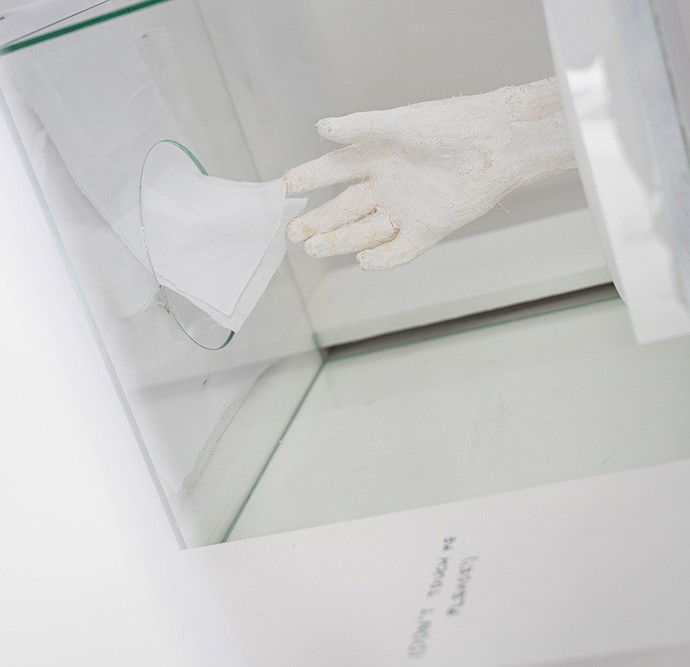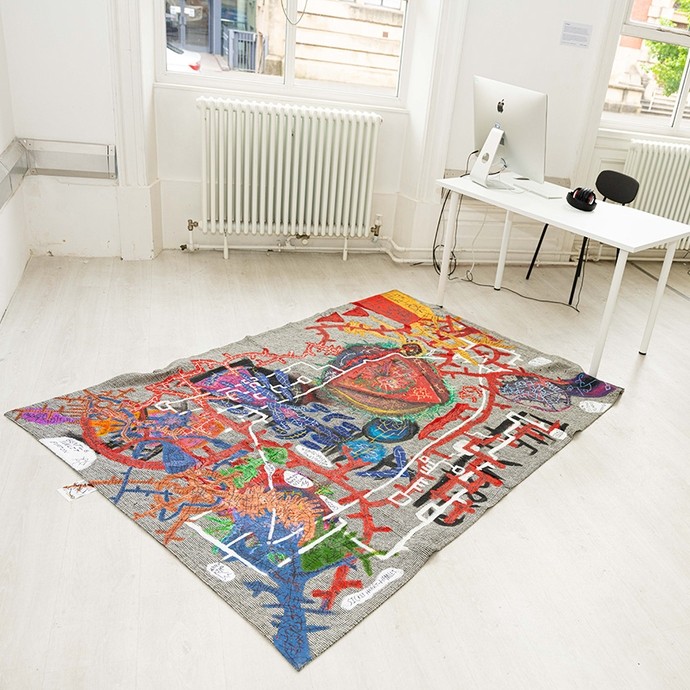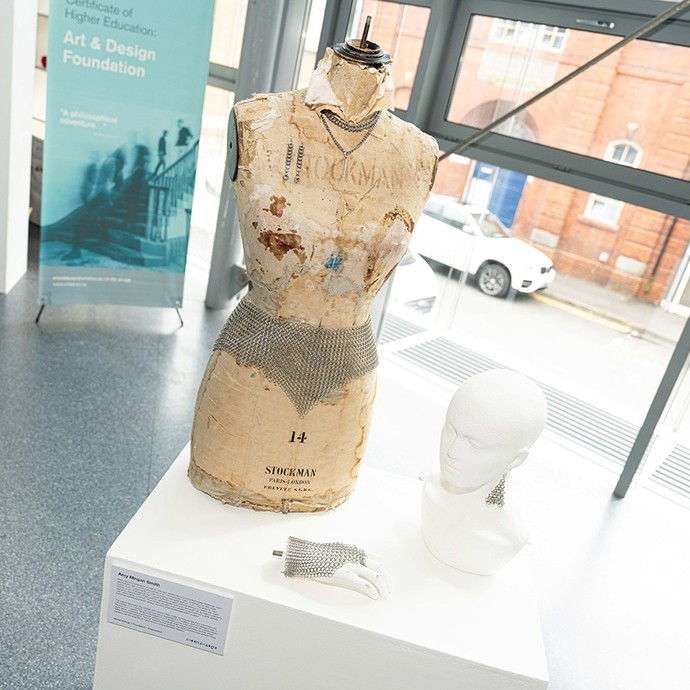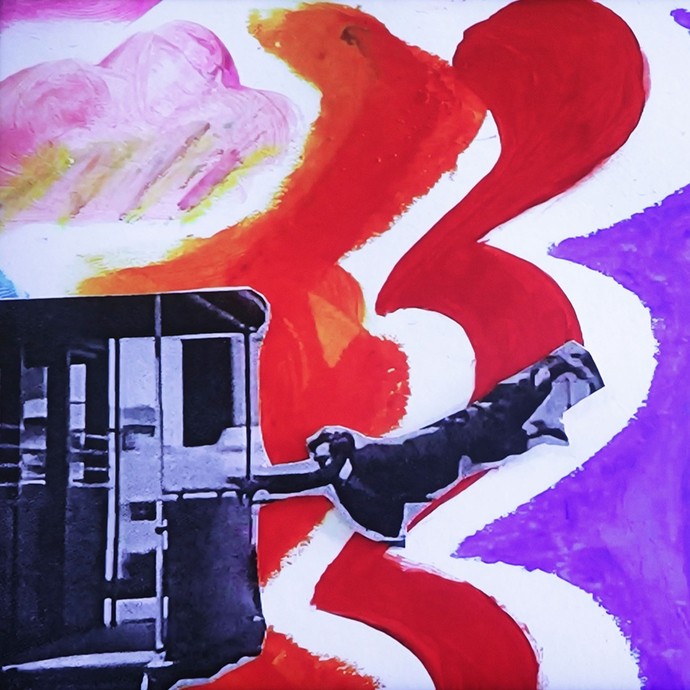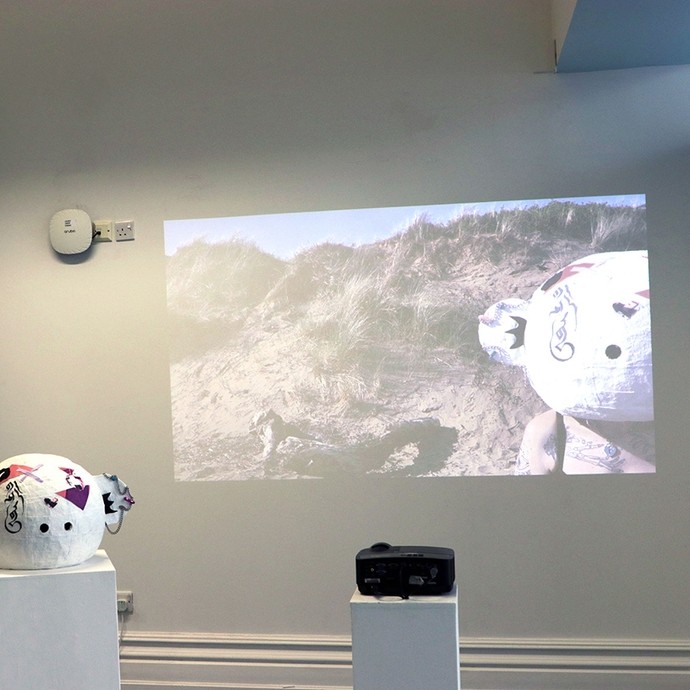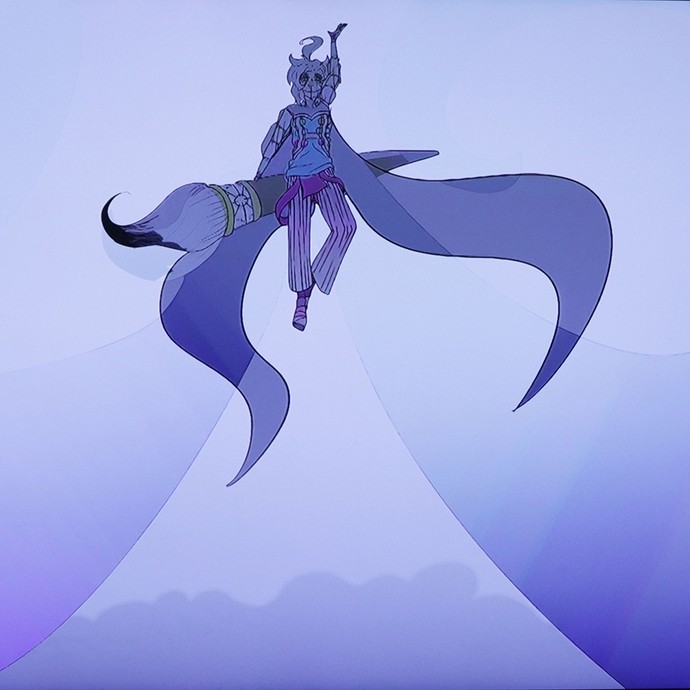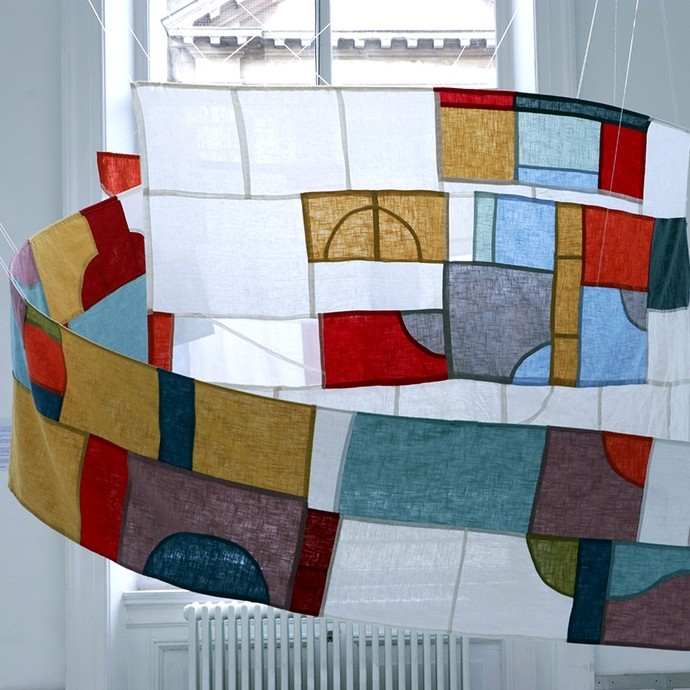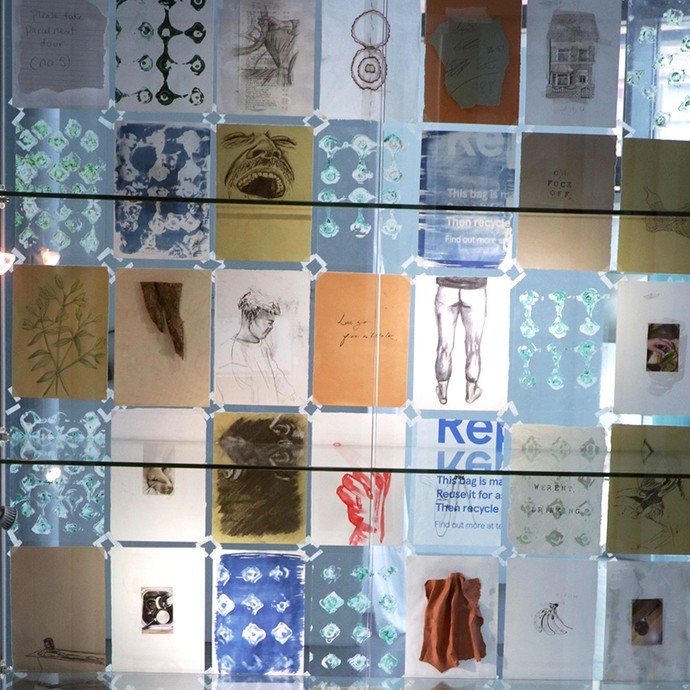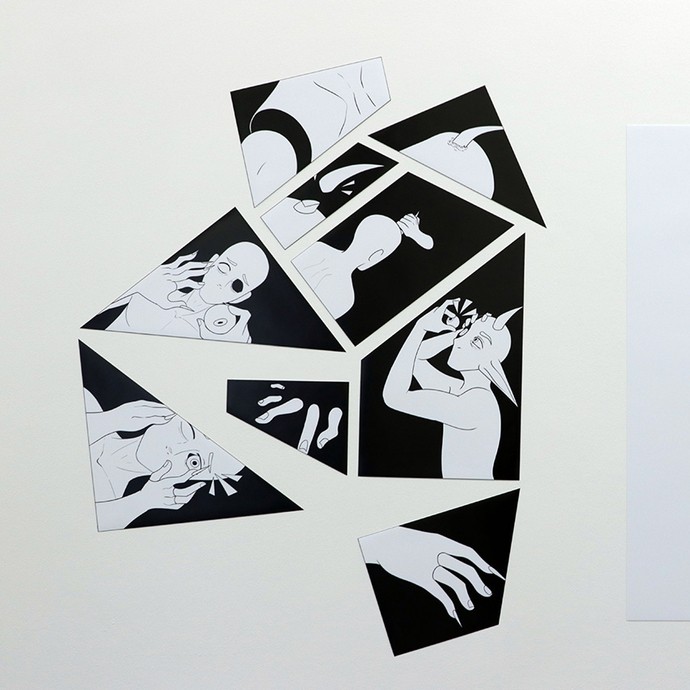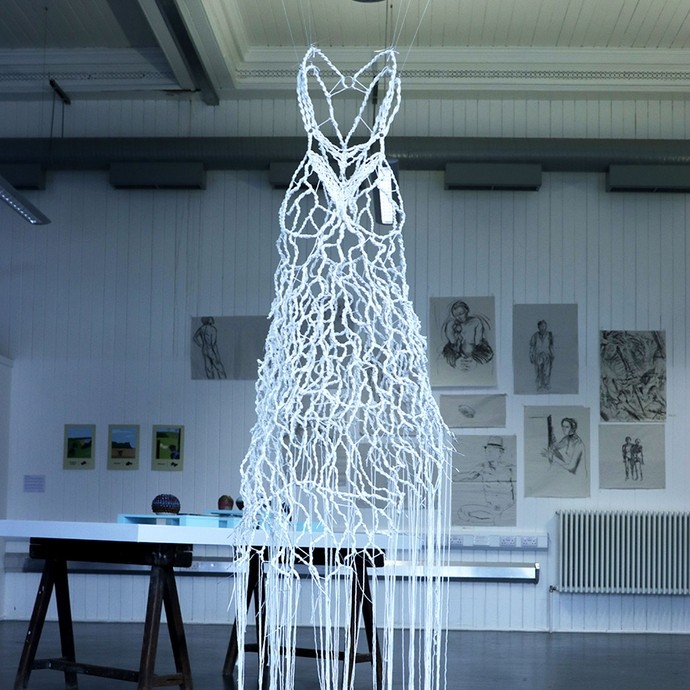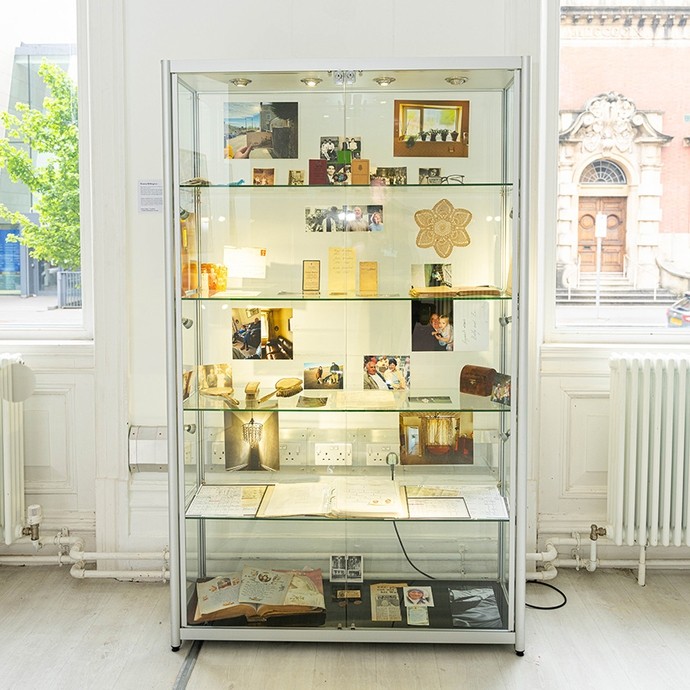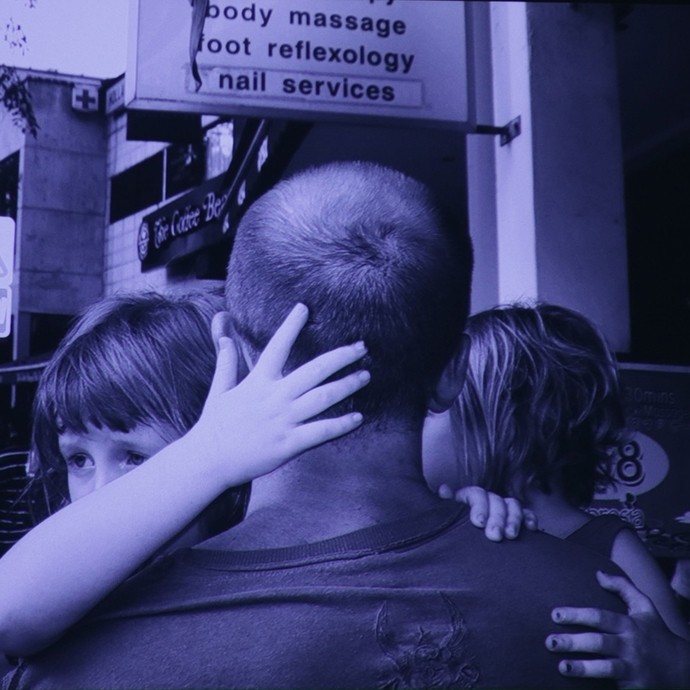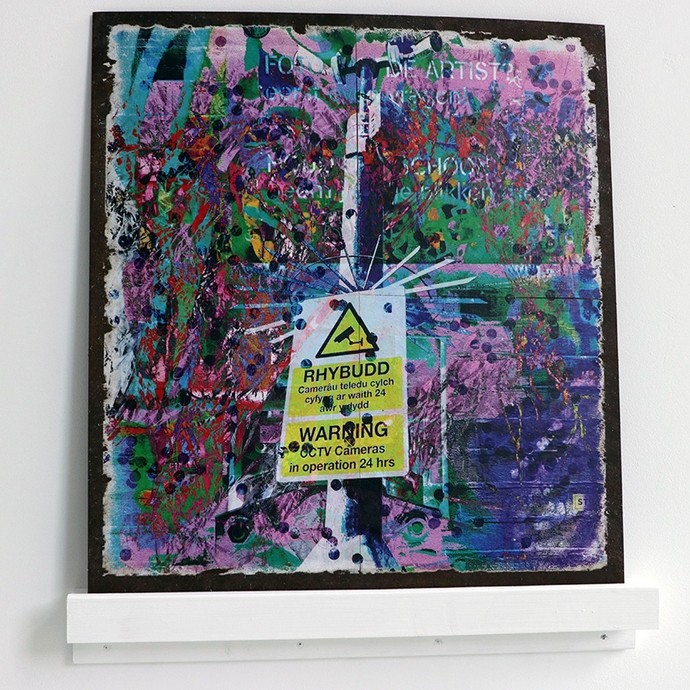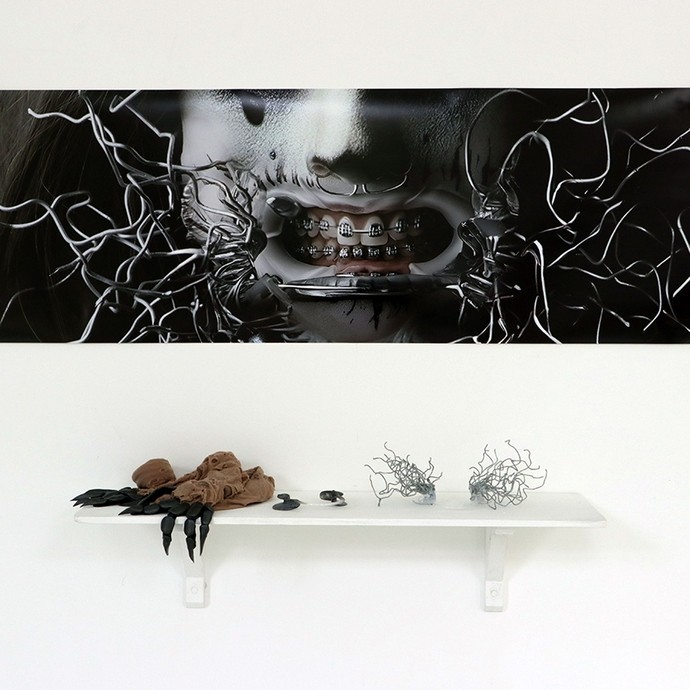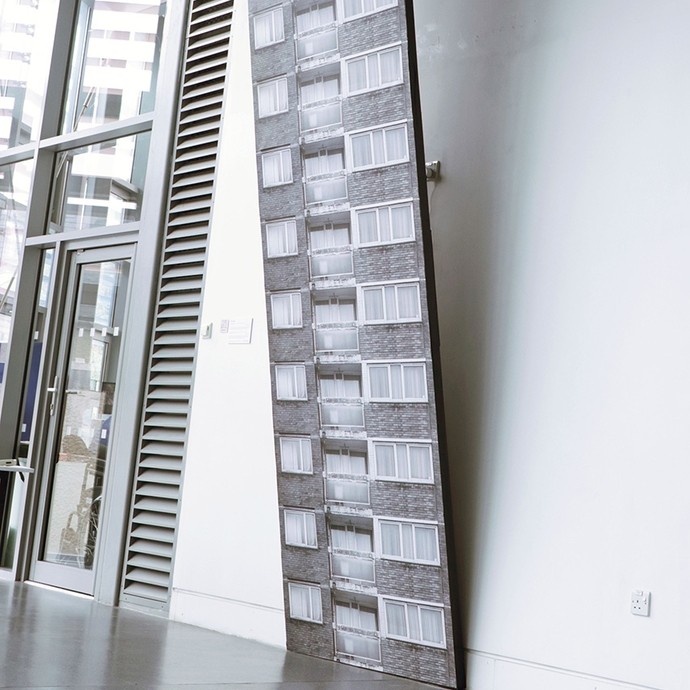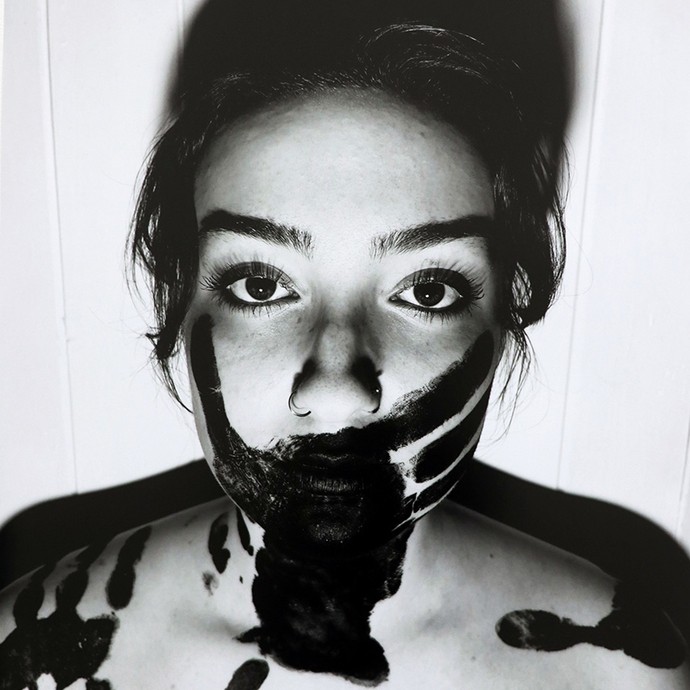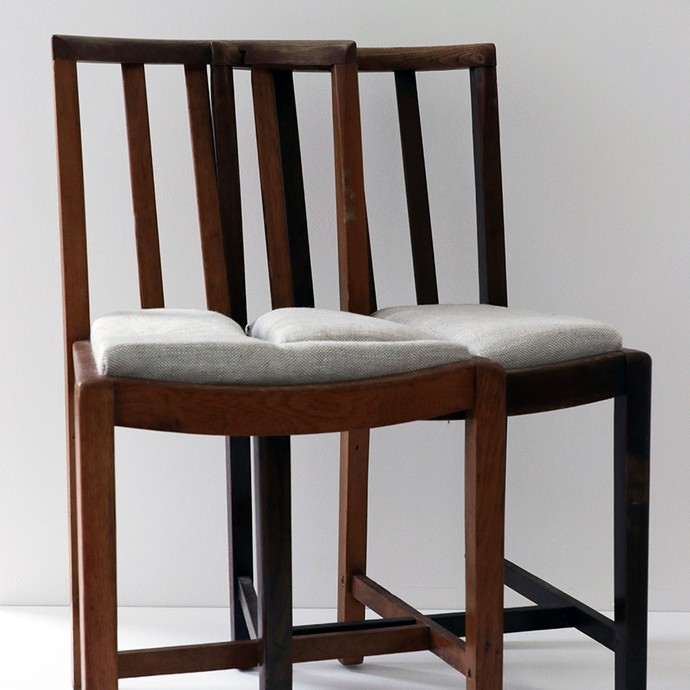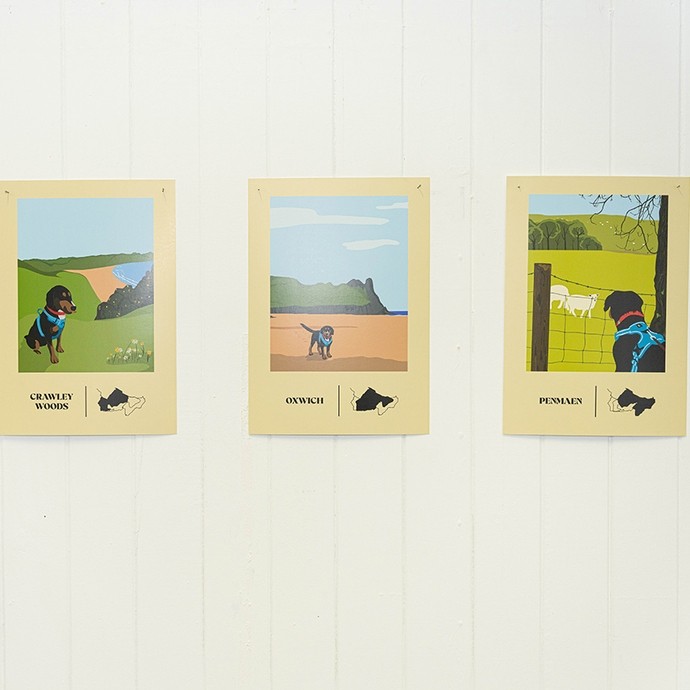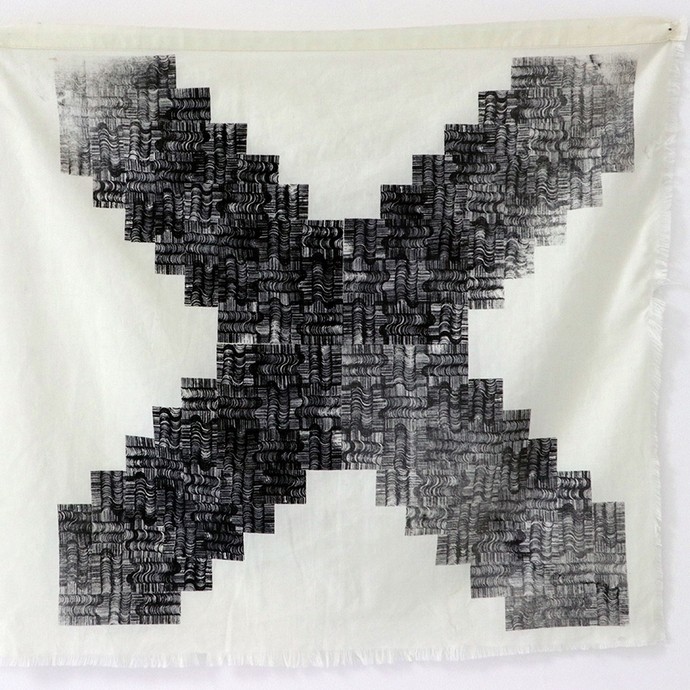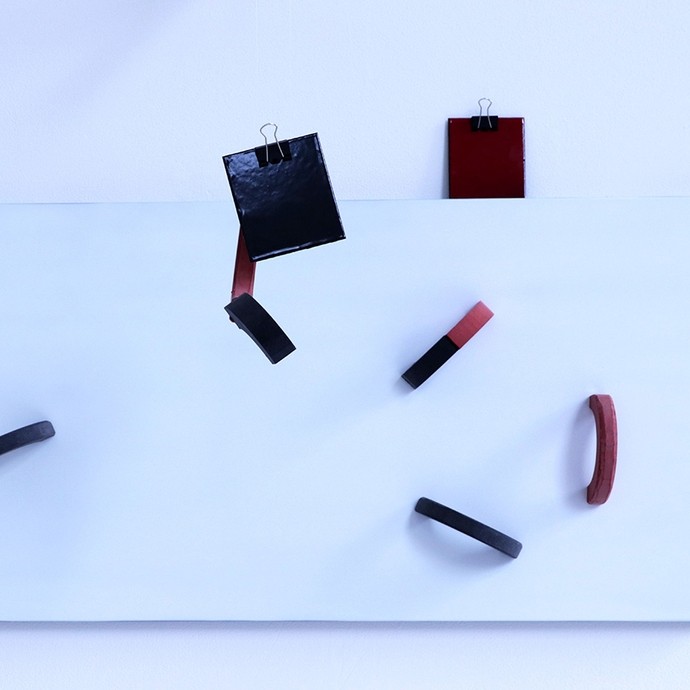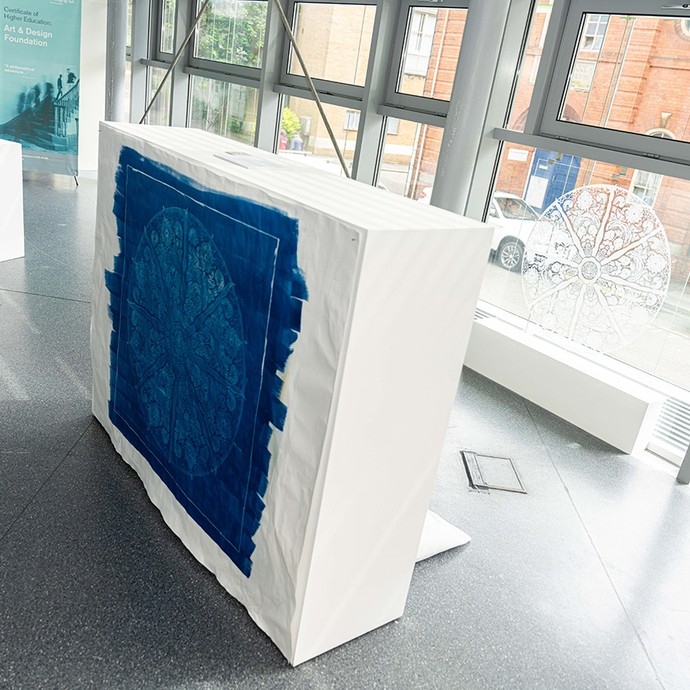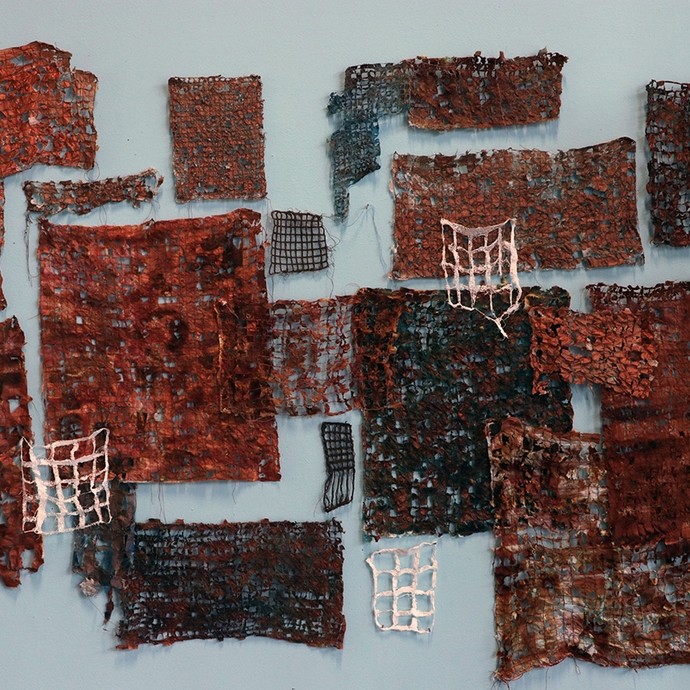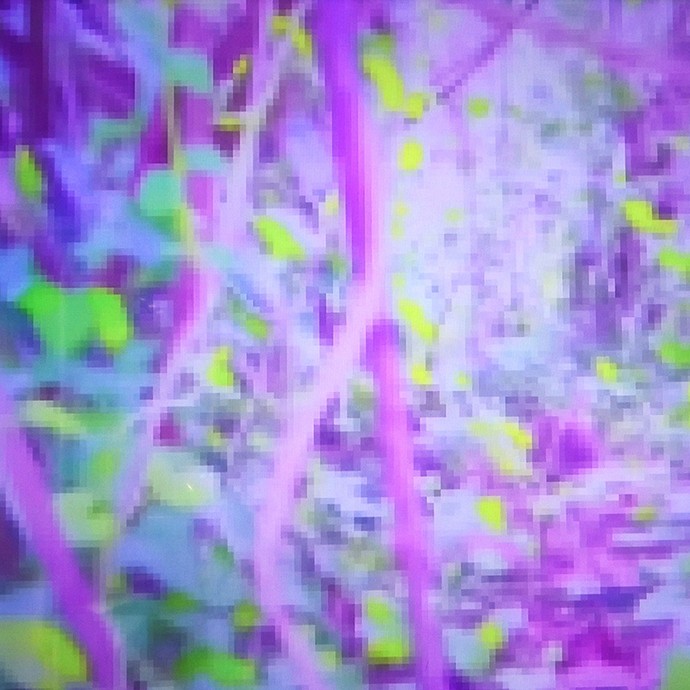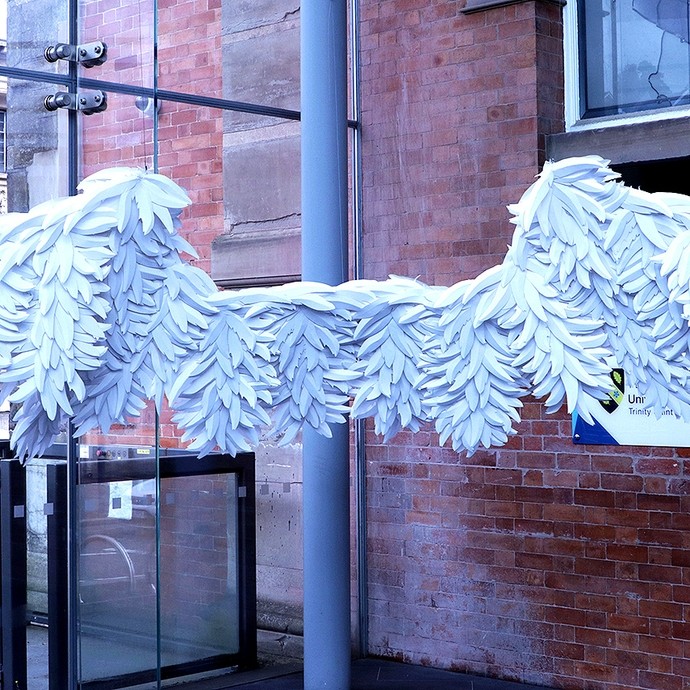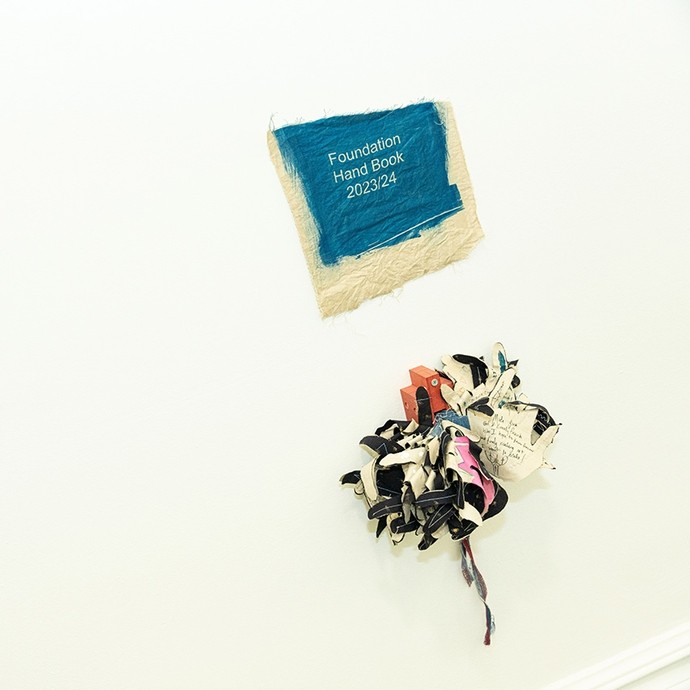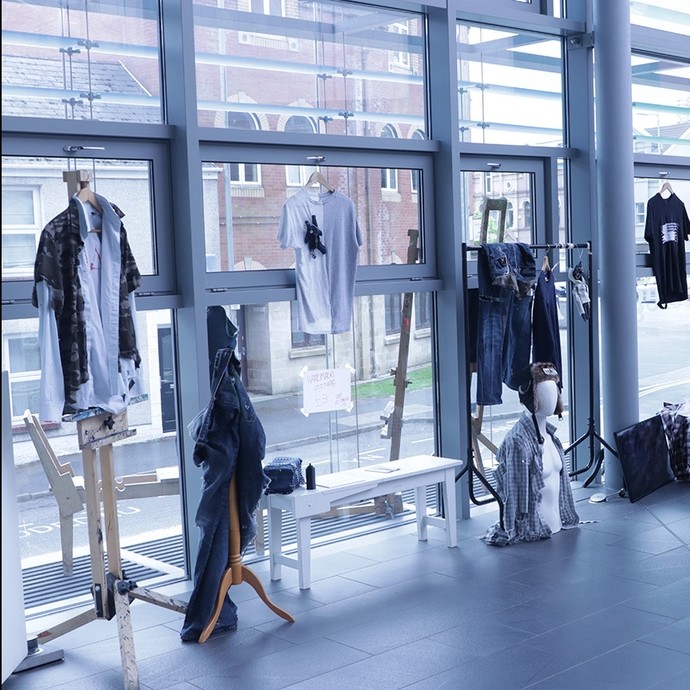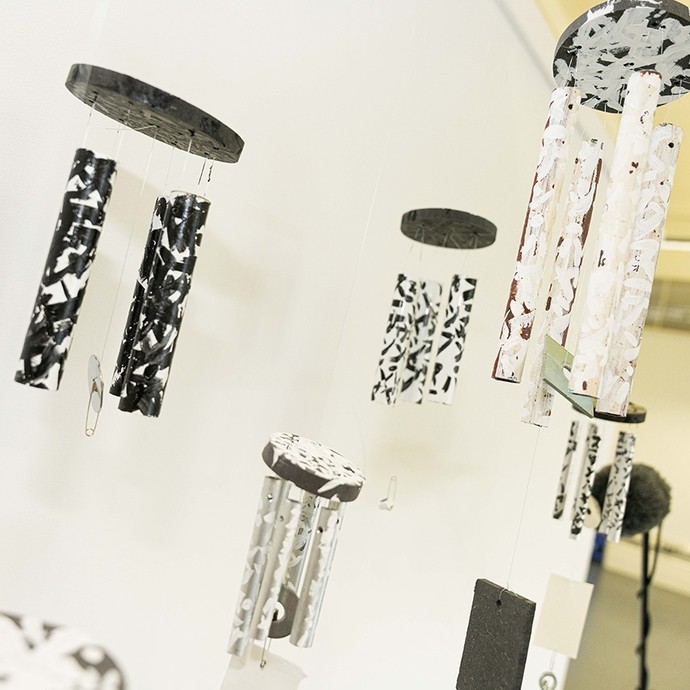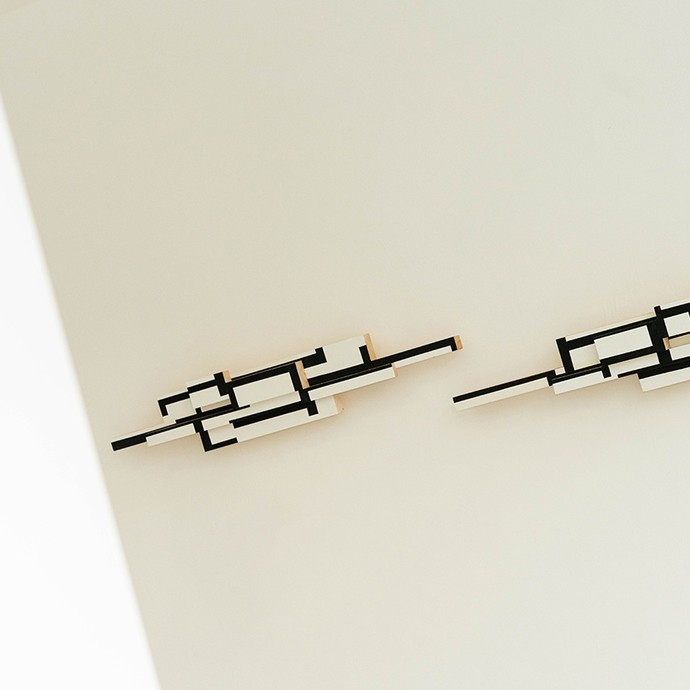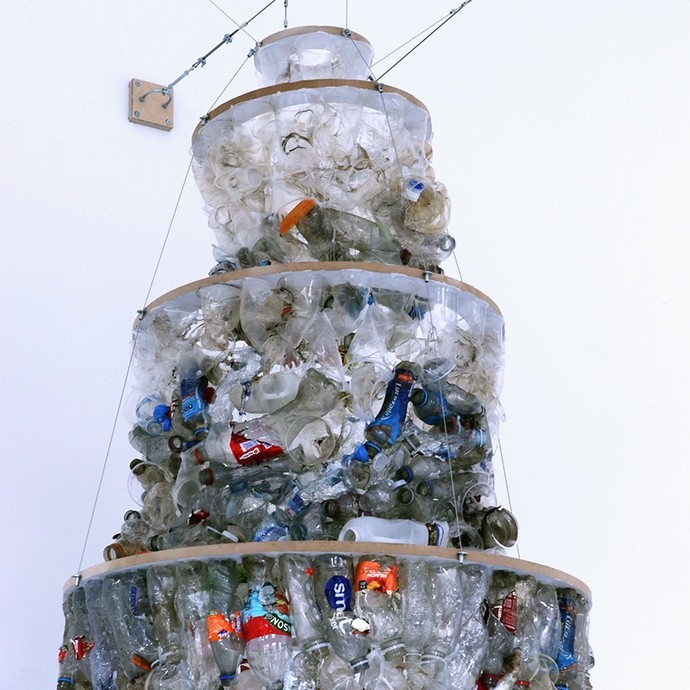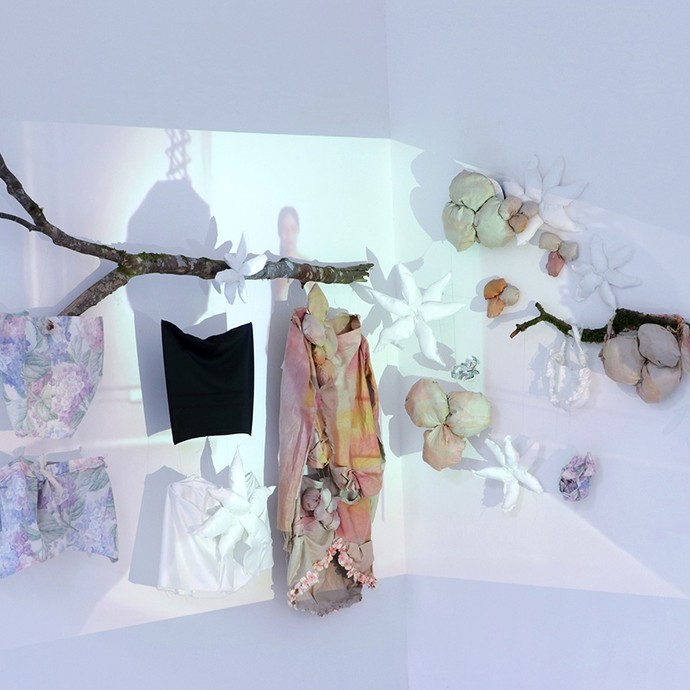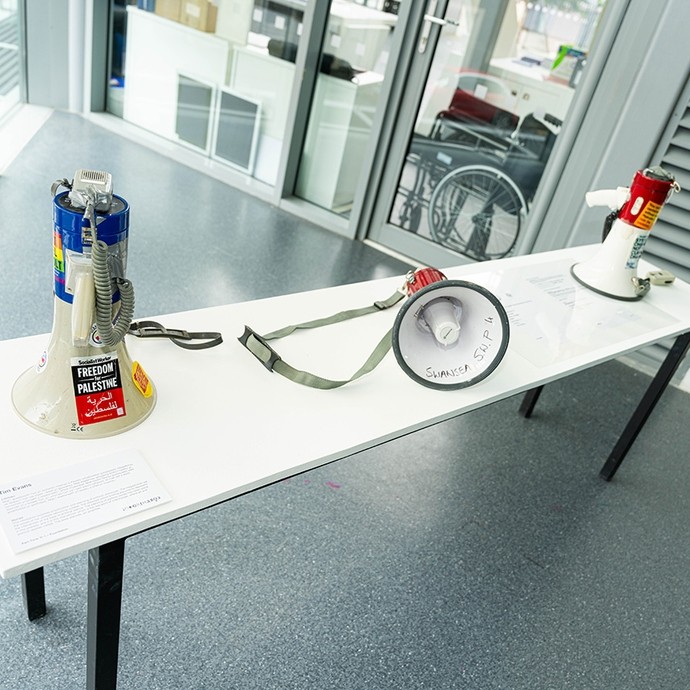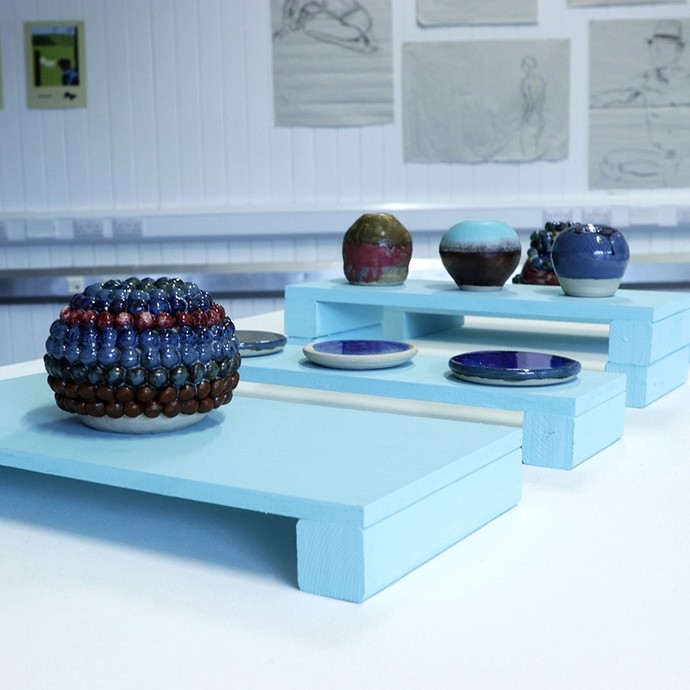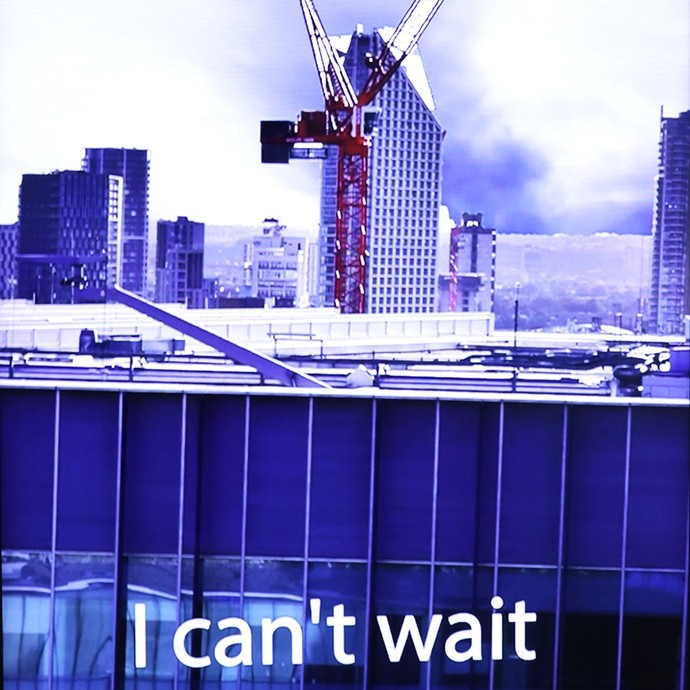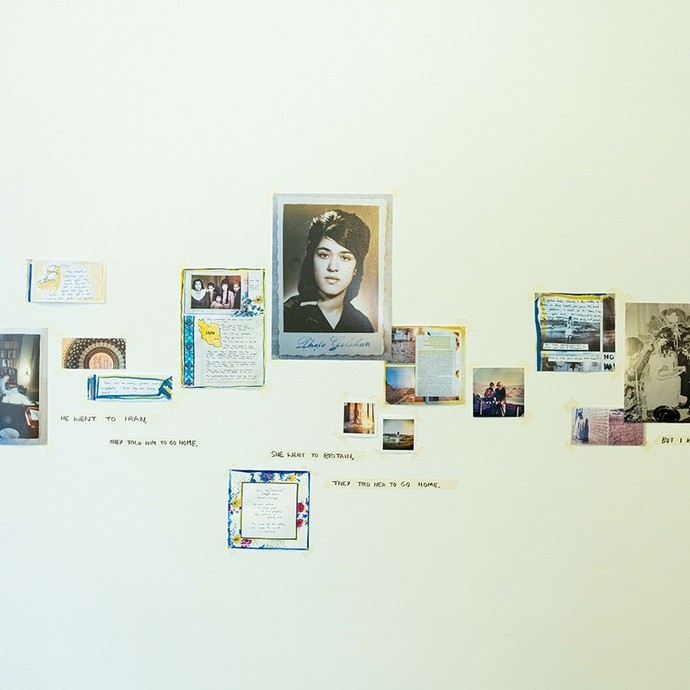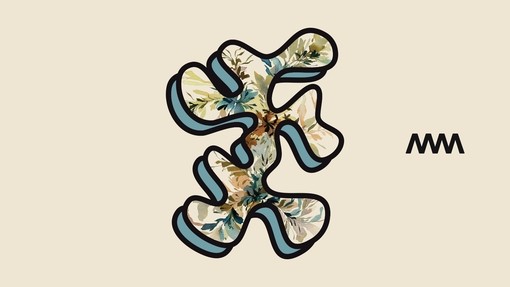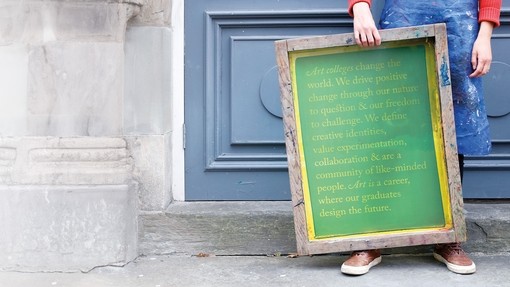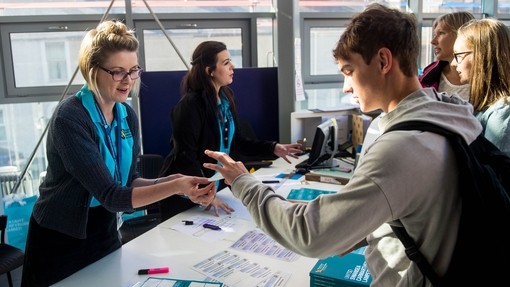Art and Design Foundation
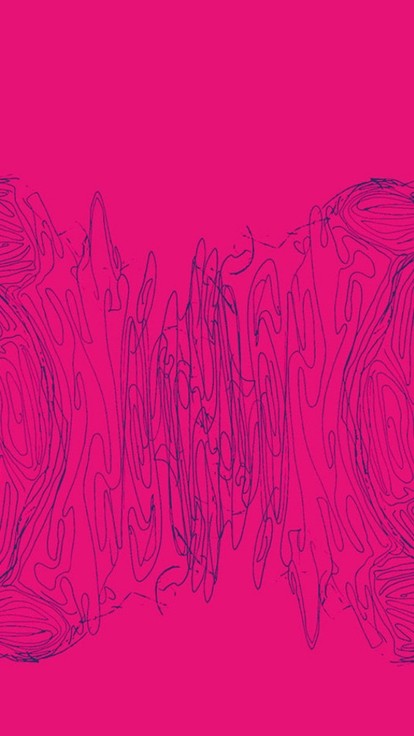
Interchange
This year’s Foundation students have worked from various perspectives and broad specialist areas such as Fine Art, Textiles, 3D and Visual Communication to produce work that relates to the title INTERCHANGE.
Interchange is the point at which the ordinary becomes extraordinary. The start of the creative process often involves the certainty of familiar ideas and practices. Interchange is when we take these elements and then combine them with the unexpected. At this point an idea can transform from the presumed into the profound.
Class of '24
Our Work
Touch. Fear. Shame. Loneliness.
This work explores touch and what it means to reach out for help. The fear and shame that comes with personal problems that we cannot deal with alone. How loneliness can impact our decisions and how physical connection can make these problems disappear, or help us deal with them. The stigma around certain problems (rape and sexual assault, drug addiction, abuse) will often be enough to stop a person from reaching out for help or even talking about them.
Can affection and touch be substituted? Can we give ourselves all the love we need?
This work shows and inhabits a fictional world as a method of examining the removal of possibility. In depicting civilisations and the logics they run on, the paint calcifies the carpet, freezing its folds in place. In applying cultural meaning, the potential of an item is removed and it becomes mundane. The digital aspect of the work lets viewers step into the world depicted and experience its cultural rules, systems of oppression, and logics. Through mimicking repetitive entertainment and playing with presented choice, it explores how anything can become mundane, specifically violence.
The pieces displayed are created with various chain maille techniques: the hand coverings use a European 4-in-1 pattern, the earrings use a Japanese 6-in-1 pattern, and the necklace uses a Persian 4-in-1 pattern. While the European 4-in-1 pattern is the most common for making larger-scale items, Japanese and Persian patterns are typical when creating jewellery as they adapt better to intricate designs. Through experimental process, the work explores how different base patterns can be adapted to make various unique jewellery designs.
Anticipation.
While I love silent films, I realize they might not as accessible to a modern day audience, not used to the medium due to the lack of color and dialogue that we have grown used to in modern cinema. I wanted to draw the viewer’s attention to the film, not through sound but loud colors. Each frame was printed and colored by hand, a choice inspired by both early filmmaker George Melies and the rotoscoped segment of Yellow Submarine (1968). The constantly shifting colors and patterns in this film capture the character’s excitement leading up to the kiss.
Throughout life I have had a challenging relationship with identity, and an unclear, shifting self-image. This is due to having borderline personality disorder. This collection of sculpture and videos actualises the progression of my identity as I have aged. Having the view that everything happens for a reason gives me the confidence that everything will eventually be okay despite life’s challenges.
Although I have struggled at times with self-image and personality, my safe space and ‘ideal self’ has remained constant.
As a response to the Interchange brief, my work has appropriated and updated an existing illustration of mine, which was a character I named ‘Ink’. Drawing on the techniques I have learnt and developed throughout my time on this course, and working with themes including creation and destruction, I have explored the fragmented limitation of using 24 frames per second in a short, animated film. The concept art pieces presented as part of this exhibition were used to assist the animation process.
Repeatedly, I find myself drawn to Picasso’s ‘Girl with A Dove’ for inspiration. This piece resonates with me, evoking a sense of innocence and tranquillity amid turbulent times. In my current work, I’ve taken cues from the painting, utilising its colours and incorporating the traditional Korean sewing technique known as ‘Bojaji’ to construct shapes and hues.
My intention was to reimagine a liminal space where natural light ebbs and flows, reflecting the passage of time and emotions.
The making process of these textile sculptures was a deliberate, methodical process involving cutting, arranging, pinning, pressing, and draping within my creative environment – a family room bustling with a mix of serenity, disorder, ideas, playfulness, illumination, connection, and motion.
An Ordinary Love.
In search for the essence of the person I love, I have instead found beauty and significance in the small moments that go unnoticed. While observing and journaling, I have captured the magic in the mundane and the joy in the routine. Our ordinary relationship with moments that are only ours are what make us extraordinary.
For this work I focused on the idea of change or transition, primarily in a personal sense but also broadly. This year has brought a lot of change both in terms of environment and in my personal life. I wanted to portray that change isn’t always a bad thing, but can still be incredibly jarring and often difficult to deal with or adjust to. It can take a lot out of us, both physically and emotionally.
An exploration of branching systems and fractal patterns; veins, branches, roots and cells enabled me to examine networks inherent to both the human body and nature.
For this, I considered ways in which humans are intertwined with nature through structures embodied by both human and plant life, questioning our relationship with nature. For example, the destruction of coral gardens bleached by human touch, essentially contaminated. I have produced a conceptual garment that is intentionally organic in nature, informed by my research, whilst also alluding to the problem of coral bleaching, visible in the natural, washed out, raw and undyed yarns used.
I wanted the wearer and the viewer to observe this conflict through the garment itself. It demonstrates both a connection to but also a disconnect from our environment, in turn, provoking the idea of ‘interchange’ as an overarching theme.
Change is inevitable, but it’s not all bad when surrounded by the people you love. When you have each other everything seems to fall in place. Life is full of change but should still be celebrated. Life is a very long road that can be cut short at any moment. So, for my piece I decided to honour the recent changes in my family’s life; I have created an archive of my Uncle and Auntie’s married life.
This work is a reflection and collection of moments spent with my dad before he died. Photographs, video footage and journals serve as a timeline for his life before I knew him and when I did. The video showcases environments and experiences he documented that are so unfamiliar to me. I question things I didn’t know about my dad, his own personal thoughts and feelings, and how it shifts my perspective on things I remember of him.
Through narration, I pay homage to him as a person and as a father and my growing relatability to him outside of the person I was aware of.
This piece began as an exploration into my own creative process, along the way evolving into an investigation regarding what is and might be perceived as ‘art’. I have experimented with textures and imagery that are not conventionally considered to be ‘art’, and in sharing how I view the world, realised my own aesthetic satisfaction in the vernacular.
This work explores gender expression through wearable accessories, developed through the ideas of ‘anti-beauty’. My pieces were made to promote transhuman imagery in favour of discovering self, through taking inspirations from acrylic nail extensions and more current trends such as tooth gems, recreating them in a more grotesque, intense way. This is to allow the viewer to see through the lenses of how I view my personal gender experience, in its own unique and almost aggressive way.
When pushing small aspects in fashion, such as accessories, to almost unwearable ways, like by widening my mouth, exposing my imperfect teeth, I felt a sense of relief and joy, to present as ‘ugly.’ Having the control to intentionally present unnervingly has been very liberating.
“A primary architectural failing; a systematised, consistent approach to a world of total “wonderful” chaos.”
Gordan Matta-Clark
A reflection on modernism and the ideologies of Le Corbusier, this large-scale photographic piece explores repetition within architecture. Through a procedural process of construction, the work questions the ability of these structures to cater to individual human experience.
This work was made to share the experiences of women in the 21st century. Its purpose being to make the viewer feel uncomfortable, and to recognise what some women are made to feel when being approached: catcalled, grabbed, hit. I personally, along with countless other women, have experienced this sort of unwanted attention. We are told, “it’s because of what you are wearing.”
Our Truth
This piece represents a defining event, experienced from three different perspectives.
His, Hers, and ‘reality’. It draws on the blurred lines between memory, bias and delusion, and how they are used to embellish ‘Our Truth’.
This collection of work is inspired by the weekly walks I go on with my Nan and our dogs, enjoying the Gower coastline. I decided to explore three routes in the area, which overlap and interchange. I tracked the statistics of the walks on the application ‘Strava’, which is used to enhance the experience of endurance sports by recording and analysing the distance, duration and steps taken.
After recording the routes, I created a series of posters designed to inform and encourage others to walk, which display the interchanging routes I took, combined with minimalist, flat image interpretations of moments with my most playful dog, Kiko, and the stunning scenery that surrounded him.
There’s a certain tranquillity to be found in the repetition of simple processes, repeated, over and over again. In this piece I wanted to explore the meditative practice behind the development of repeat patterns, and how simple lines and shapes evolve into complex structures when they are multiplied and then arranged in particular ways.
This work explores the idea of ‘Interchange’ through the concept of play and interactivity. Using a composite material called Valchromat, which is strong and offers variety in colour, it presents the possibilities of dual-function accessories, using magnets to enable designs to be switched and adapted according to the aesthetic choices of the wearer.
Have a seat and rest a weary heart. Allow the glass to cast warmth and clarity upon body and mind, to softly burn away hopelessness and resignation. Today’s media may condemn, demand self-flagellation, but here, the natural world welcomes and wonders at you. Sit, and wonder in return.
This piece invites you to look beyond defeatism, to rise above the masses of negative climate information, and believe we can change for the better: to appreciate and reconnect with the natural world. The rush for progress has deluded humanity into thinking we are separate from nature, when in fact, we are interchangeable.
To sit and look upon this piece acts as a prayer to yourself and the natural world: ‘‘I see myself in you and I am not resigned.’’
Interchange through fragmentation.
I wanted to explore the idea of physical decay and fragmentation and how materials and textiles respond to different processes which distress and change their shape and form. Disintegration is a key theme of this piece and is a response to visiting the derelict copper works at Hafod.
The work explores the patinas and textures of the decaying structures - the colour palette is informed by the copper ore that was such a fundamental element of Swansea’s past.
Copper pins link to the experience of materiality that I am conveying through my work and link to the topography of place, accentuating the fragility and distressed nature of the work, but also our environment. Interchange in this context is used as an overarching theme which examines these precarious qualities.
Through digital repetition, this work demonstrates the process of degradation. Human actions are speeding up existing rates of degradation within the natural world, with fifty of every 20,000 species going extinct each year. Through fifty digital repetitions of 20,000 pixels, this work makes rates of degradation more visible, reflecting on how human actions are bringing us closer to environmental catastrophe.
The fable of Icarus encourages us to consider how we should fly: if we fly too high our wings will melt in the sun and if we fly too low, we will end up drowning in the sea. The moral is to fly with these considerations, to find a balance, and to understand our place in the world.
I made this work to share the story of Icarus in relation to contemporary design, through the construction of hand-crafted wings, using modern-day materials including plastic, paper, MDF and glue in place of the candle-wax and feathers used in Icarus’ original iteration.
The work invites us to consider our trust in the mechanisms that support us, and to recognise the benefits and consequences of our choices.
Imagine yourself wearing these wings: take flight, and be responsible with the course of your journey.
The work on display is a series of textile experiments that address memory. The work utilises fabric taken from the clothing of family members, including those recently passed. It was inspired by the artist Louise Bourgeois, who used her own clothes to make art pieces, fabric sculptures and books as a way to document her experiences.
In my work, the garments have been unpicked, then cut into shape. This has been symbolised by the hand, which suggests the act of making itself, but also is an embodiment of other students and staff on Foundation Art and Design. Each hand template signifies that of an individual student, which they have inscribed with a personal message. I asked, “what has been your favourite memory of the course?” I wanted to be able to capture, then contain this, in an experimental book piece, which can be turned over and handled by the viewer. It acts as a reminder of my time spent this year on Foundation.
Америка Здарова (What’s up America)
This small collection is inspired by a stylistic exchange between modern America and Post-Soviet Eastern Europe. I decorated these secondhand clothes with my own modifications to represent a visual interchange of Americana and Eastern Europe using grunge ‘distressions’, hand-made elements, and an emphasis on small details. Throughout the collection I wanted to represent the prevalence of counterfeit brands during the Soviet Union due to their restrictions on capitalist marketing, particularly Adidas, which became a cultural symbol of Russia and Eastern Europe. Alongside the collection is a mix of Eastern European and American hip hop.
The ring of a windchime, carried by a wan wind through her kitchen on a heavy, midsummer day. This piece exists as a memorial and a processing of feelings for the passing of a very dear friend’s mother.
The makeshift nature of the components (a combination of found objects, and constructed objects made from readily available materials) reflect an acutely urgent need to respond in the moment by using what is immediate and practical as instruments of articulation, as well as an understanding of the impossibility of translating ineffable, ephemeral memories and emotions encountered through life and death.
I am subconsciously drawn to the structure in the everyday, and the patterns that create themselves in my life. Over the past few months this way of thinking has revealed itself in my making process, feeding into my aesthetic decisions instinctively, almost like second nature.
This work reflects the aspects of an ordered nature of life while still holding on to that sense of chaos and unpredictability that are imminent in life. Informed by the Minimalist movement, the work’s aesthetic is purposely restrained, creating emphasis on line and form. Through order, structure and repetition the work has helped me understand my own creative tendencies, learning more about myself in the process.
The instantly recognisable design of a chandelier is associated with luxury, extravagance and beauty. This work blends ideas of opulence with discarded litter to arrive at a shocking contrast, prompting a consideration of how we utilise single-use plastic for convenience: putting wealth before sustainability.
Echoing the enticing effect of light on plastic underwater, the work uses a similar technique to tempt you in. Once inside, you are entrapped, surrounded by single-use plastic, confronted with the idea that there is a choice. Although it is common knowledge the sea is being choked by plastic, it’s a distant concept, one we cannot see. By shining a light on this subject, this installation brings the danger to the surface, challenging you to grasp the harsh reality of our impact upon the world and our home.
My Floral Garden is a collection of three conceptual outfits and accessories that demonstrate the meaning of soft femininity through floral designs and an analogous colour scheme. With these three conceptual outfits, I have displayed three significant flowers: Sakura Blossoms, Orchids and White Lilies. Being my favourite flowers, they symbolize various meanings to me personally, but one in common: beauty. I have cultivated my own feminine style, inspired by the work of both Valerieivi Milano and Shushu/Tong, producing a short film of my garments worn by Haowei Zhang.
Voices
This installation explores amplification and silencing of political utterances. The megaphones are the voices of the unheard becoming audible. The redacted police briefing documents represent the intervention of the state to enforce silence. The silencing of political voices has taken place in this process, and it is this intervention which is the real point of interchange, where art and political realities collide. The state silences, art amplifies.
Some of these pieces have been made using reclaimed broken glass which has been added to the clay to create something new and original. Some of these experiments explore texture and layering glazes. The textures created are meant to be handled and enjoyed both physically and visually.
These handmade pieces are to be used, not just to sit gathering dust. This idea was instilled in me at an early age, spending time with my great-grandmother whose ceramic works were used every day. If they broke, then they broke having fulfilled the purpose for which they were made. The reclaiming of disposed materials and utilising discarded objects is both an environmental and essential part of my practice.
As I stand before my creations, I am reminded of a fundamental truth: while facts and charts may inform, true learning comes from immersion in the world, from exploration, creation, and the sheer joy of living. This philosophy underpins my artistic journey. Venturing into the world, I capture its essence through the lens, blending photography and filmmaking. Each image is a testament to the richness of experience found beyond textbooks and classrooms. Through my art, I invite others to join me in embracing life’s wonders, igniting curiosity, and celebrating the beauty of existence.
You Can’t Go Home is a look at interchanging culture and immigration through the story of my grandparent’s interracial relationship. It’s both a record of their experiences and a political statement about the beauty of multiculturalism that made me who I am, made up of family photographs and writing inspired by conversations with my grandparents. In their own words:
“Given that we come from very different backgrounds (one of us from the Yorkshire coalfields, the other from an ancient city on the edge of an Iranian desert), we have each been able to teach the other much in the years before and after our marriage – lessons about how different cultures affect one another and how some values (like love and beauty) transcend political and religious distinctions and boundaries.
“Being together has made us alert to places which are full of – indeed, made out of – intercultural history; places in which one encounters layers of cultures on top of one another, places like Istanbul, Sicily, Cordoba, Toledo and Rome.
“We have learned not to think of our own cultural backgrounds as inherently superior or unique in value, while each being proud of what is best in our own heritage (and perhaps ashamed of what is worst). Consciously and unconsciously, we have encouraged our children and grandchildren to value the diversity (and the interconnectedness) of different cultural traditions; to regard the world, rather than just the place of your birth, as your heritage.”
(Parvin and Glyn)

